

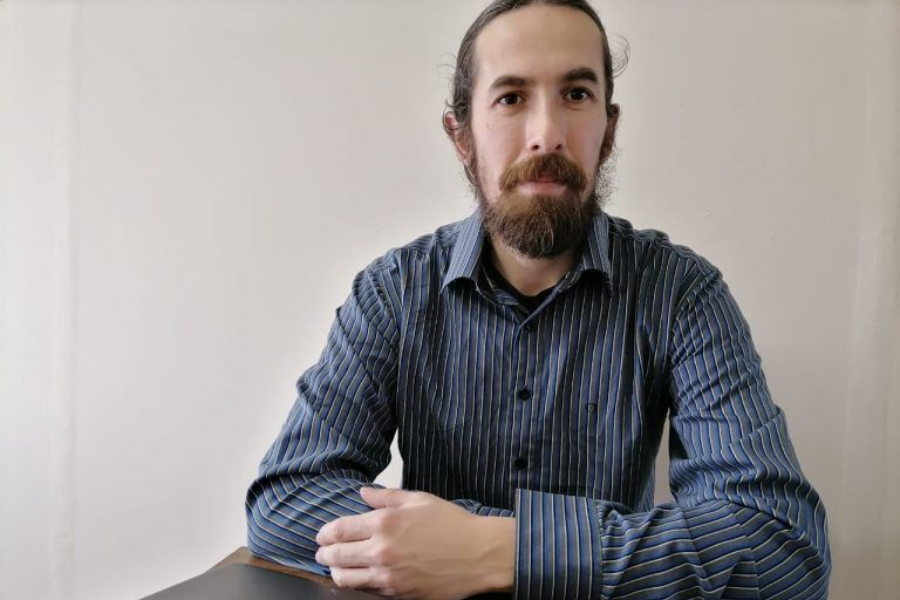
DR(c). ERWIN RAÚL WERNER CÁRCAMO
Cohorte 2018
Ing. Civil Electrónico, UFRO
Magíster en Ciencias de la Ingeniería mención Ing. Eléctrica, UFRO
e.werner01@ufromail.cl
Dra. Mónica Rubilar
Doctorado Nacional, ANID
Formulation and cooling stage, key factors in the elaboration of canola oil oleogels as fat substitutes, with solid texture characteristics and stable to lipid oxidation, applicable to the food industry
Due to the damage to health from consumption of high levels of saturated fatty acids (SFA) and trans-fatty acids (TFA), there has been an increased interest in polyunsaturated fatty acids (PUFA) consumption from plant sources. This has made necessary to study alternatives that supply fats with a healthy lipid profile. Oleogelation is a technique that has been developed to structure liquid edible oil into a product called oleogel to be used as a food ingredient with a solid texture, giving the possibility to elaborate a fat system without TFA and/or with lower amounts of SFA. Oleogelation “traps” the liquid oil in a three-dimensional network using structuring molecules within beeswax and ethyl cellulose have been successfully used. Studies have shown the influence of internal factors and external factors on the final characteristics of the oleogel. In this area, the cooling stage, a crucial factor for obtaining the desired final oleogel characteristics have been poorly studied. Considering this, this work aims to evaluate the formulation (concentration and oleogelator type) and cooling stage in the oleogel elaboration to obtain oleogels based on canola oil with a solid texture and stable against lipid oxidation. An experimental cooling system will be designed, capable of applying a controlled cooling temperature profile, avoiding external temperature disturbances.

DR(c). DIEGO ALONSO VALDEBENITO MARCHANT
Cohorte 2018
Ing. Civil en Biotecnología, UFRO
d.valdebenito01@ufromail.cl
Dra. Carolina Shene
Doctorado Nacional, ANID
Production of phospholipids in Thraustochytrium sp.: effect of culture and extraction conditions
Numerous are the positive effects of long-chain omega-3 polyunsaturated fatty acids (LC PUFAs). Human activity has transformed the marine environment increasing the concentration of pollutants that affect the quality of these products, for this reason it is necessary to look for alternative sources with potential to be used at the industrial level. Thraustochytrids have been extensively studied for the production of ω-3 LC PUFAs in the form of triacylglycerols (TAG) or neutral lipids, in these microorganisms it is also possible to find DHA. However, its production and yield would be affected by culture conditions. The conventional method of microbial lipid extraction has been solvent extraction. At industrial scale, hexane is used as a solvent due to its high efficiency and easy recovery by evaporation. However, its repercussions on the environment and toxicity have forced to look for new alternatives. Green solvent technologies, such as supercritical carbon dioxide (SC-CO2) extraction, aim to develop non-toxic and environmentally friendly extraction processes. The objectives of this research is the study of the effect of the composition of the medium and culture condition on the ω-3 LC-PUFAs production linked to phospholipids by Thraustochytrium sp, and is to define the conditions of the SC-CO2 extraction process of these compounds by adding ethanol as a modifier agent.

DRA(c). CLAUDIA DANIELA MARILLAN BÁEZ
Cohorte 2019
Ing. Civil en Biotecnología, UFRO
c.marillan01@ufromail.cl
Dr. Edgar Uquiche
Doctorado Nacional, ANID
Evaluation of sequential supercritical extraction to obtain fractions from Leptocarpha rivularis extracts and their use as cholinesterase inhibitors
Alzheimer’s is a progressive neurodegenerative disease that leads to the loss of memory and autonomy of who suffer from it. Inhibition of cholinesterase enzymes have been reported to be a viable therapeutic target for the treatment of Alzheimer’s. This treatment is based on the use of cholinesterase inhibitors, which helps to delay the degradation of acetylcholine. Cholinesterase inhibitors are drugs of a non-selective nature that can cause nausea, vomiting, diarrhea, among others. However, the inhibition of cholinesterase remains an important objective for the decrease in the progression of Alzheimer’s. A promising approach to treating Alzheimer’s disease is the use of medicinal plants. Leptocarpha rivularis is a plant whose therapeutic properties have been studied for the treatment of various diseases, due to its important content of bioactive compounds. Obtaining these compounds from the plant can be carry out by supercritical extraction with CO2. Supercritical CO2 can extract non-polar bioactive compounds. Extraction of more polar compounds requires the addition of a cosolvent such as ethanol. Depending on the extraction conditions it is possible to carry out fractional or sequential extraction. Sequential supercritical extraction has the advantage of achieving fractionation and a higher extraction yield due to a greater exhaustion of the substrate. The objective of the research proposal will be to evaluate sequential supercritical extraction as an extraction method to obtain enriched fractions of bioactive compounds from L. rivularis stems and their application as inhibitors of cholinesterase enzymes. It is expected to obtain extract fractions with a high cholinesterase enzyme inhibition capacity, characterized by their higher concentration of bioactive compounds compared to supercritical one-stage extraction.
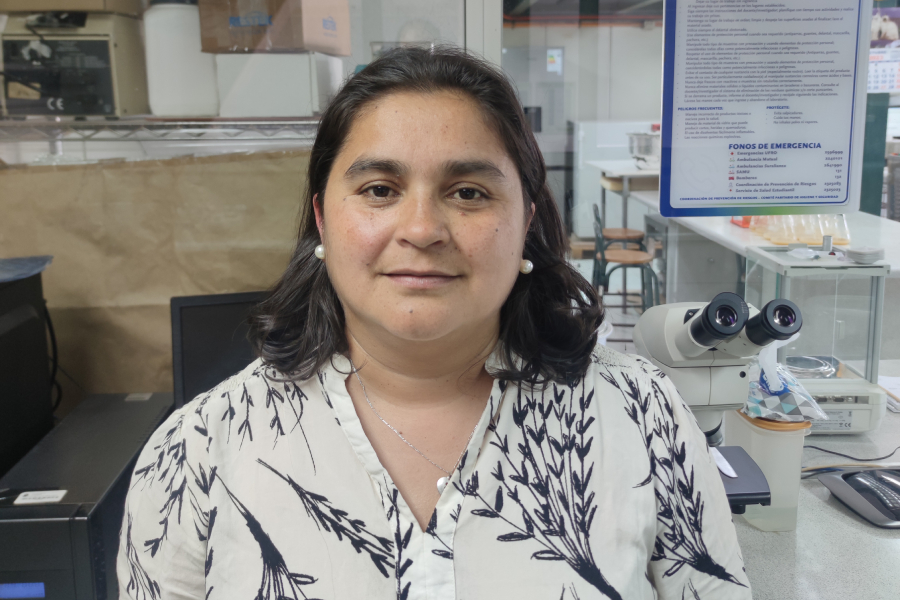
DRA(c). LISET SOLEDAD FLORES SALDIVIA
Cohorte 2019
Ingeniería en Alimentos
liset.flores@ufrontera.cl
Dra. Carolina Shene
Doctorado Nacional, ANID
Production of coenzyme Q10 (CoQ10) by a native strain of thraustochytrid: optimization of process conditions
Coenzyme Q10 (CoQ10) is a cofactor of the electron transfer process in the plasma membrane of prokaryotes and the inner mitochondrial membrane of eukaryotes. The molecule consists of a quinone coupled to an isoprenoid chain composed of 10 sequentially linked isoprenyl groups. This coenzyme has also antioxidant activity, a property that has been used to counteract the effects of many diseases such as hypertension, Alzheimer’s, Parkinson’s, heart diseases, among others. Because it is a powerful anti-aging factor it is commonly added in the preparation of facial and body creams. CoQ10 can also be found as part of dietary supplements. Thraustochytrids are marine protists known mainly because of their ability to accumulate lipids rich in long-chain omega-3 polyunsaturated fatty acids at high levels. Previous studies have established that at least one isolated native strain, called RT2316-13, possesses all the genes involved in the synthesis of CoQ10. The general objective of this project is to determine culture conditions and parameters for the CoQ10 production process using the RT2316-13 strain, one of the hypotheses of this work that the microbial CoQ10 production could be economically feasible if the valorization of different biomass fractions is considered.
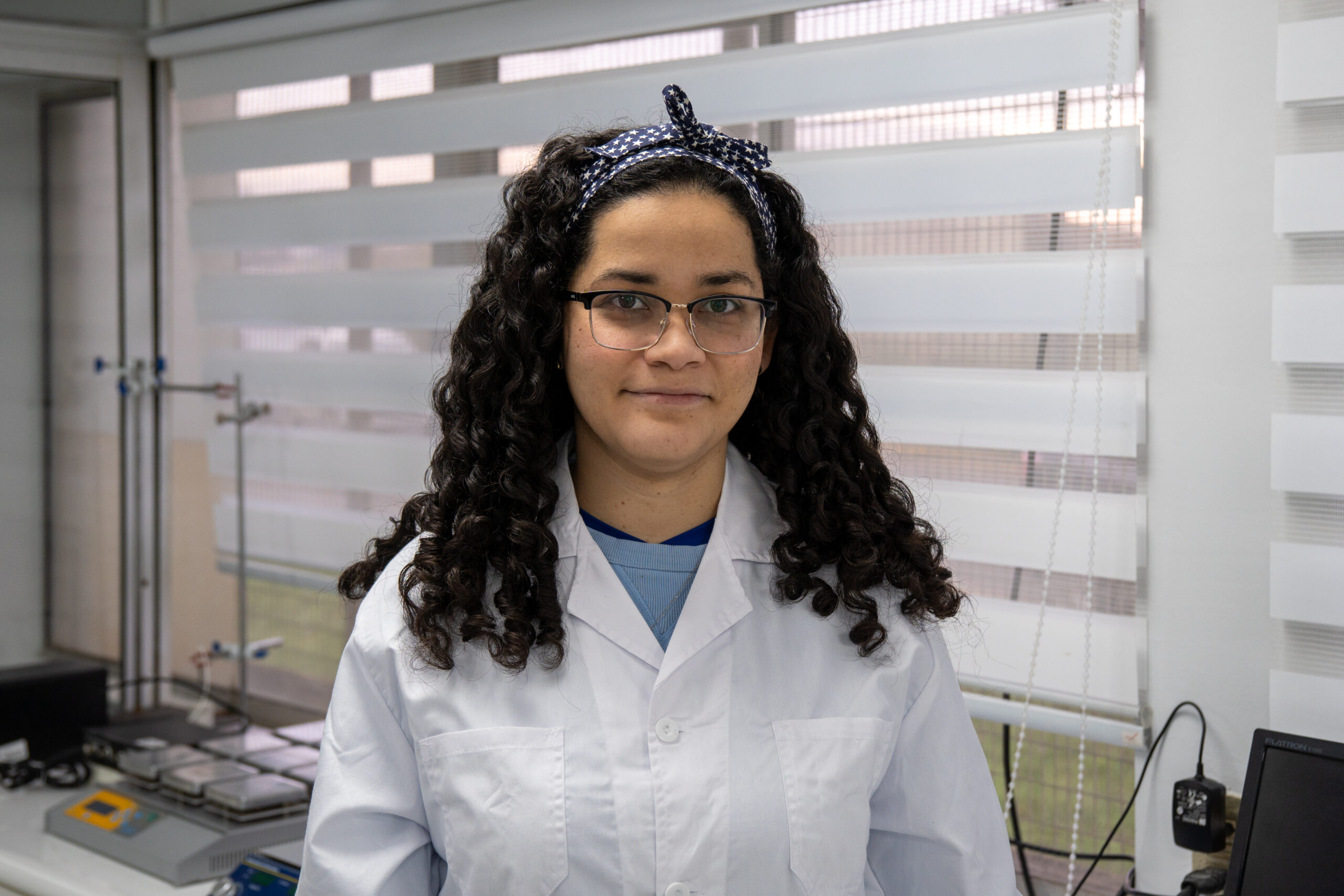
DRA(c). JOELIS ISABEL VERA ACERO
Cohorte 2019
Químico, Universidad de Los Andes (ULA), Venezuela
Magíster en Ingeniería Química, Universidad Federal de Santa María, Brasil
j.vera12@ufromail.cl
Prof. Guía: Dra. Olga Rubilar
Prof. Co-Guía: Dr. Gonzalo Tortella
Doctorado Nacional, ANID
Biogenic synthesis of Fe3O4@SiO2@ZnO nanoparticles for depolymerization of Kraft lignin in a photoreactor: Photocatalytic activity, recycling and obtaining high value added phenolic compounds
Conversion of residual lignin into chemically valuable products through environmentally friendly processes at mild reaction conditions is one of the challenges facing the still emerging bioeconomy. In this scenery, heterogeneous photocatalytic processes for lignin valorization stand out due to its potential to provide a cleaner and more sustainable alternative. Superparamagnetic Fe3O4@SiO2@ZnO nanoparticles synthesized by using natural resources could be an efficient photocatalyst for lignin depolymerization. The use of a simple and eco-friendly route for the synthesis of magnetic nanocomposites based on ZnO could minimize the use of toxic reagents and solvents. The aim of this proposal thesis is to evaluate the biogenic synthesis and reuse of Fe3O4@SiO2@ZnO nanoparticles in the depolymerization of lignin Kraft in a photoreactor to obtain vanillin, vanillic acid, syringaldehyde, and guaiacol as value-added products. For the synthesis of the nanoparticles, the wheat straw will be used as SiO2 biosource, while that aqueous extract of the leaves of Galega officinalis will be used as reducing and stabilizing agents for the synthesis of Fe3O4 and ZnO.
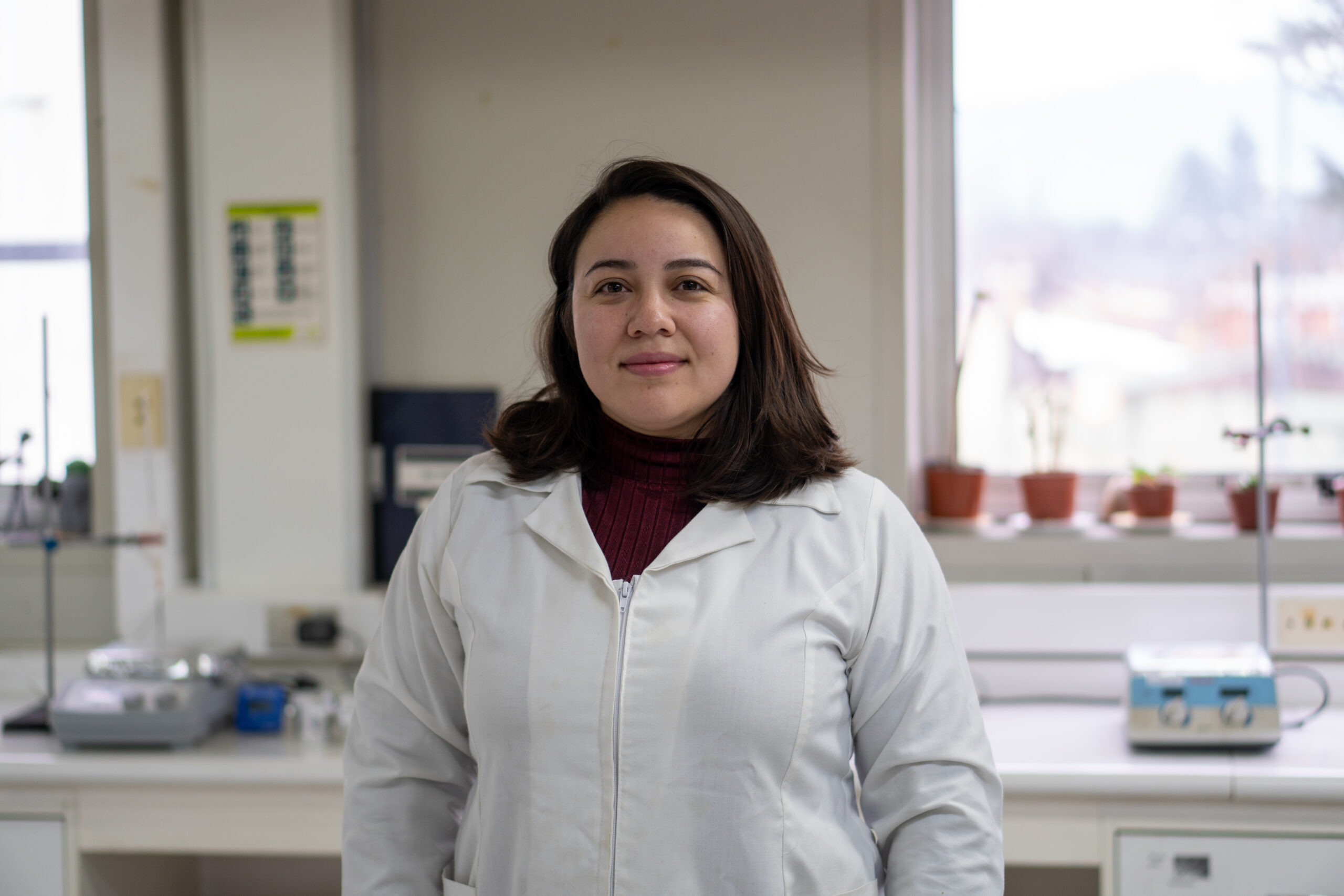
DRA(C). SOFIA BELÉN GONZÁLEZ LEZANA
Cohorte 2019
Ing. en Alimentos, UFRO
s.gonzalez02@ufromail.cl
Dra. Mónica Rubilar
Doctorado Nacional, ANID
Bigel systems enriched with polyunsaturated vegetable oils and microencapsulated astaxanthin as a substitute for saturated fatty acids and trans fats
The elastic properties of hard (animal) fats are important in producing texture, spreadability, shelf life, and mouthfeel of foods. To eliminate trans fats and to reduce saturated fats in foods oleogel, emulgel and bigel technology have been developed. Gel technologies are soft matter systems widely used in cosmetic applications and food products. The interacting components and the resulting characteristics of a system replacing animal fat are vital to recognize the right combination of gelling agents, vegetable oils and also process conditions. The structuring of edible oils is a strategy that has been implemented to promote the functionality of a semi-solid, as an alternative to animal fat. In this sense, new strategies are emerging, such as bigel systems that allow structuring the oil with a reduction in energy intake. Bigels also have capacity to encapsulate lipophilic/lipophobic bioactives. The objective of this project is to develop a bigel system enriched with polyunsaturated vegetable oils and astaxanthin based on emulgel (O/W) and olegel with a semi-solid texture as a fat substitute. To develop the bigel system, different oleogel: emulgel ratios will be used, where different ratios of: 80/20; 50/50, and 20/80 and mixing speeds: 300, 400, 500 rpm will be evaluated. The gelling agents will be the material (aqueous phase) to encapsulate astaxanthin with high encapsulation efficiency. In addition, the optimized emulgel with astaxanthin will be characterized by microencapsulation morphology, emulgel stability and lipid oxidation. In addition, oleogels will be formulated with different process conditions, temperature, time, agitation, gelling agent and vegetable oils to evaluate the semi-solid texture and low lipid oxidation. Finally, the texture and bioaccessibility of astaxanthin in the bigel system will be studied by in vitro digestibility.

DR(C). ÁLVARO FERNANDO GONZÁLEZ FLORES
Cohorte 2019
Ingeniería Mecánica, UFRO
alvaro.gonzalez@ufrontera.cl
Dra. María Eugenia González
Doctorado Nacional, ANID
Synthesis of carbon nanostructures through hydrothermal carbonization of black liquor kraft lignin: potential use in supercapacitors
The proposal is oriented at the use of industrial waste from the pulp mill paper industry, this industry produces high amounts of lignin as waste that is recycled as a low calorific fuel to produce electricity from steam. However, due to phenolic structure that lignin possesses makes it a desirable candidate for the synthesis of high value products, through chemical or thermochemical transformations, such as hydrothermal carbonization (HTC). HTC process in the last decade has gained momentum in research. Carbon nano-structures produced by HTC, have attracted the attention of the scientific community. Currently the high energy consumption has explored new sources of energy in search of improvement of this storage, new materials have been proposed help energy storage in batteries and supercapacitors. The current research is focused on the application of nanostructures in the desing of electrodes of these supercapacitors. This project proposes use the lignin contained in the black liquor to synthesize nanostructures through hydrothermal carbonization, and to evaluate the product as supercapacitors. The experiments will be perform a factorial experimental design that will be used in hydrothermal carbonization of lignin. The electrochemical performs of nanostructures from lignins will be study by an electrochemical impedance spectroscopy (EIS) using a high current potentiostat/galvanostat.
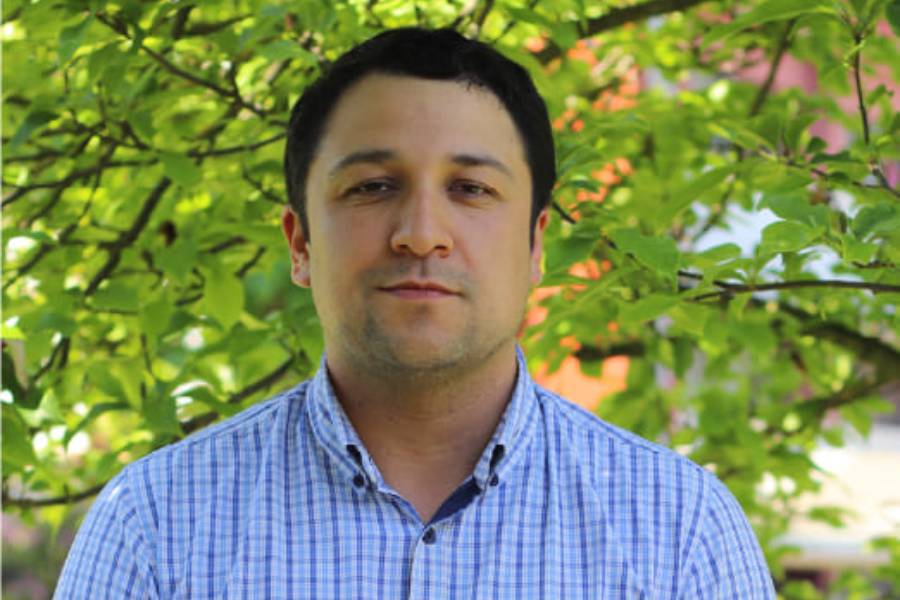
DR(c). MICHAEL DIDHIER ARANEDA GAVILÁN
Cohorte 2020
Ingeniero Civil Ambiental, UCT
Magister en Ciencias de la Ingeniería mención Biotecnología
Magister en Gestión de Negocios
m.araneda07@ufromail.cl
Dr. Gustavo Ciudad
Doctorado Nacional, ANID
Develop of a biorefinery process based on the use of Olive Mill Solid Waste (OMSW) pretreated with White-rot Fungi (WRF) and Aquaculture Sludge (AS) supplements
Olive Mill Solid Waste (OMSW) is one of the most polluting wastes from the food industry due to its recalcitrant characteristics but is a good candidate for biogas and biofertilizer production due has a high organic matter content. OMSW pretreatment is necessary to eliminate the phenolic compound in order to avoid the microbial inhibition in biological treatments. In this sense, biological pretreatments using white-rot fungi (WRF) to degrade the OMSW has been gaining attention due it low economic and environmental cost. But, the low nitrogen content in the OMSW could limits the ligninolytic enzymatic activity of WRF. So, the addition of an external nitrogen source to the OMSW could improve the fungi ligninolytic activity. In this context, the aquaculture industry waste has high nitrogen content and frequently are disposal in sanitary landfills. The AS could be used as OMSW cosubstrate to improve their pretreatment processes by WRF. The study proposal is based on developing an economically and environmentally viable biorefinery process from the pretreatment of OMSW with WRF supplemented with Aquaculture Sludge (AS) as a nitrogen source, to obtain value-added compounds. The enzymatic extract will be obtained in the liquid phase of the pretreatment process, the solid phase obtained from the pretreatment will be subjected to codigestion with supplemental addition of nitrogen by means of AS, to evaluate the performance in biogas production. The economic study will be carried out by means of economic indicators of projects and the environmental study will be carried out by means of the Life Cycle Assessment (LCA) methodology, using Simapro software.
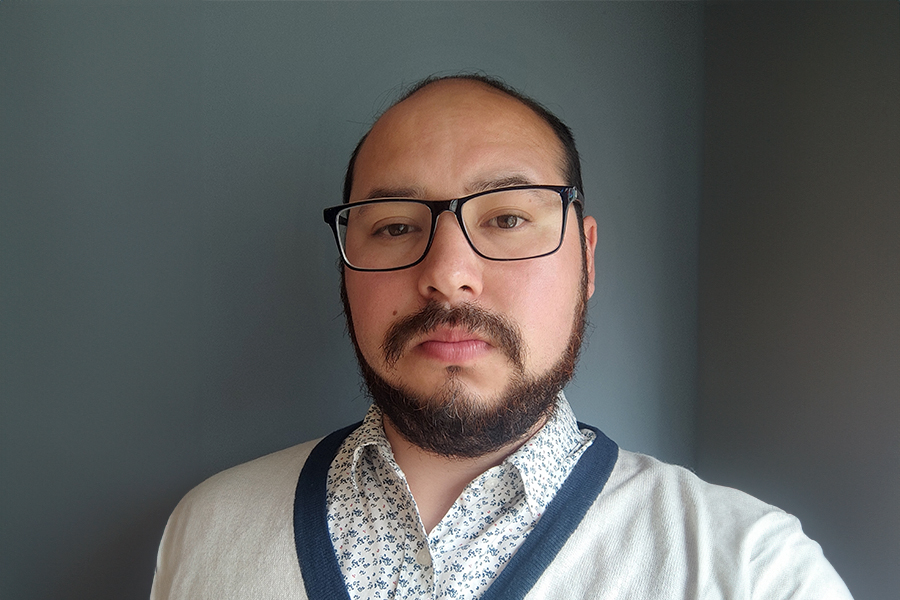
DR(c). PARÍS GABRIEL PAREDES INOSTROZA
Cohorte 2020
Ingeniero Civil en Biotecnología, UFRO
Magister en Ciencias de la Ingeniería mención en Biotecnología
p.paredes03@ufromail.cl
Dra. Carolina Shene
Doctorado Nacional, ANID
Design of a strategy for the optimized production of a squalene-enriched oil by Thaustochytrium RT2316-13
Squalene is a hydrocarbon with several benefits to human health; it has been studied to prevent some diseases such as cancer. In addition, it has applications in the cosmetic and pharmaceutical industry. The content of squalene in olive oil is low, and the production of olive oil is associated with several adverse effects on the environment that also question its sustainability. Therefore, microbial squalene is an alternative that needs to be studied. Thraustochytrids belong to a group of protists widely distributed in diverse water environments. Some marine strains are capable to produce squalene. Thraustochytrids are aerobic heterotrophic microorganisms that consume various sources of carbon and nitrogen, although most of the experimental studies had used glucose or glycerol and yeast extract as carbon and nitrogen sources, respectively. The use of culture media based on industrial wastes has also been studied giving good results for the production of lipids, and squalene, and in some cases the results are comparable to those obtained with laboratory culture media. Squalene is an intermediate product in the sterol pathway; so in microorganisms that do not accumulate squalene, the squalene epoxidase (EC. 1.14.14.14.17) oxidizes squalene to produce lanosterol. One way to prevent this reaction is through the use of terbinafine, an antifungal compound, that inhibits squalene epoxidase; another strategy is using anaerobiosis phases in the culture. One of the aim of this proposal is to reduce the costs for the production of an squalene-enriched oil using Thraustochytrium RT2316-13. Another objective is to induce the accumulation of squalene. Finally the production of squalene in an airlift reactor will be studied. This work will increase the knowledge on Thraustochytrium sp. grown on low cost carbon and nitrogen sources for future scale-up.
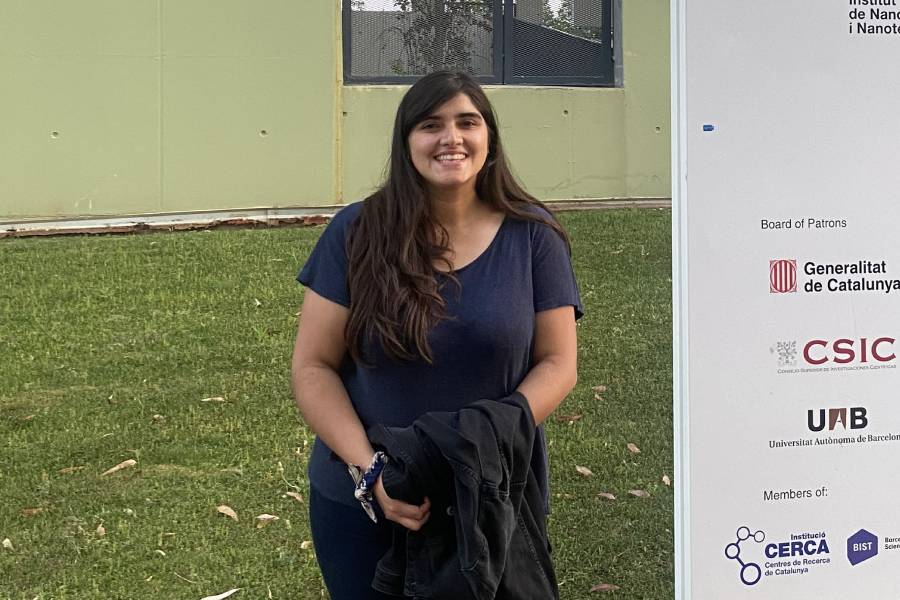
DRA(C). CAMILA FERNANDA SILVA RIQUELME
Cohorte 2021
Ingeniero Mecánico, UFRO
Magíster en Ciencias de la Ingeniería mención Ingeniería Mecánica
camila.silva@ufrontera.cl
Dra. Mara Cea
Doctorado Nacional, ANID
Development of a dye-sensitive solar cell based on iron oxides/biochar composites and Antarctic bacterial pigments.
Dye-sensitized solar cells (DSSCs) are the third generation of photovoltaic devices capable of transforming solar radiation into electrical energy. In recent years, research on sensitizers in DSSCs has been focused on the production and application of pigments produced by extremophilic microorganisms. The main drawback of bacterial pigment is associated to their photovoltaic which is still low compared to the yields obtained in cells sensitized with pigments of synthetic origin. The counter electrode is also an essential component in DSSCs because it acts as a catalyst. Regarding to the catalyst types, the platinum is considered the most used in DSSC. However, these materials have disadvantages, in this context, activated carbon has demonstrated to be an option to replace the traditional platinum catalyst. The objective of this project is to develop an efficient and stable dye sensitive solar cell bases in a counter electrode prepared iron oxides/biochar composites and a photoanode sensitized with antarctic bacterial pigments. The expected results are to develop a catalyst applied in the counter electrode of a DSSC that allows improving the photoelectric conversion performance in a cell sensitized with bacterial pigments, this from the valorization of agricultural waste, giving an added value to the residual biomass.

DR(C). JAIME RICHARD ÑANCULEO CALFIQUEO
Cohorte 2021
Ingeniero Civil Ambiental, UFRO
j.nanculeo01@ufromail.cl
Dra. María Eugenia González
Doctorado Nacional, ANID
Development of a bifunctional electrocatalyst based on Mo-Co-Ni supported onto biochar derived from hazelnut shells, for the production of green H2.
Currently, several countries have shown great interest in diversifying their energy matrix an alternative fuel of great interest worldwide at present is green H2 produced by electrolysis. The main advantages of this fuel are its high calorific value and the fact that it is a clean fuel. However, the high energy demand involved in H2O splitting and the high cost of noble metal-based electrodes are the main challenge to overcome. In view of this, the development of electrocatalysts based on non-noble metals (or noble metal- free) supported onto carbonaceous complexes (graphene and carbon nanotubes) have generated great interest, in order to obtain a competitively low overpotential, using cheaper raw materials. However, the high cost associated with these supports are a major limitation, opening the opportunity to use supports with similar characteristics to graphene and carbon nanotubes at a lower cost, and ideally, that can be used as cathode (catalyze HER) and anode (catalyze OER), i.e., bifunctional. An alternative is biochar produced by pyrolysis of agro-industrial wastes, because of its documented high surface area, good stability and conductivity. Based on the above, the general goal of this project is to develop a Mo-Co-Ni/biochar-based bifunctional electrocatalysts, produced by the pyrolysis of residual hazelnut shells, for the production of green H2. To address this, a three-factor experimental design (pyrolysis temperature, residence time and biochar: catalyst ratio) with three levels will be executed to evaluate the significance of these factors on the surface area, electrical conductivity and overpotential of the catalysts. The expected results will be to produce biochar with ideal characteristics to be used as a electrocatalysts support by slow pyrolysis. It is also expected that the activation with KOH and N-doping will be more effective by impregnating the biomass before pyrolysis. Finally, the electrocatalyst is expected to have a competitive performance compared to those noble-metals-based in the electrolysis of acid, alkaline and wastewater matrices, extending the versatility of H2 production.
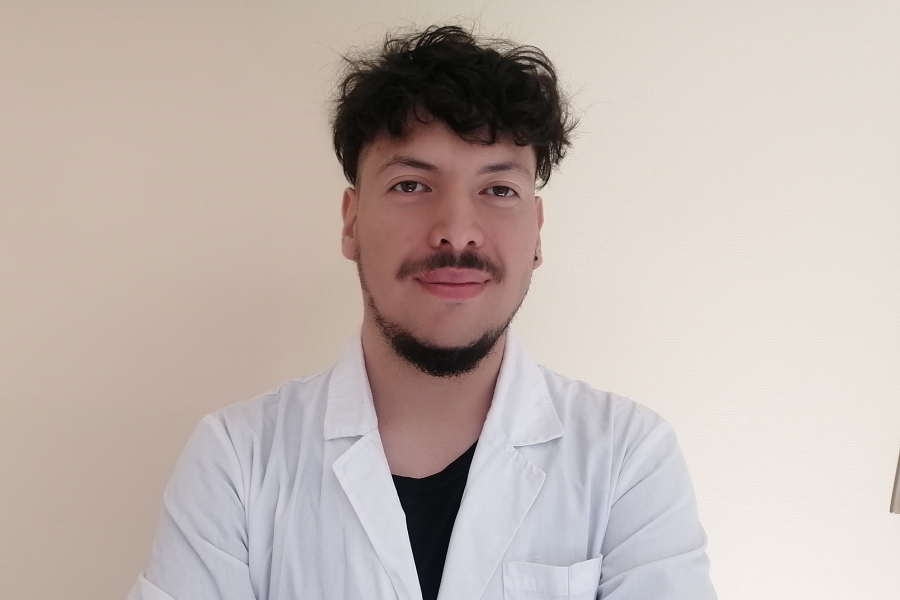
DR(C). VÍCTOR HUGO BASCUR JARA
Cohorte 2021
Ingeniero Civil en Biotecnología, UFRO
v.bascur01@ufromail.cl
Dra. Mariela Bustamante
Doctorado Nacional, ANID
Effect of chia mucilage (CM) and biogenic SPIONs synthesized using CM (CM- SPIONS) on the survival and viability of probiotic bacteria encapsulated by spray drying in cross-linked alginate matrices
Probiotic bacteria (PB) of the Lactobacillus and Bifidobacterium genera are the most widely used in the food industry due to their health benefits. The products must guarantee a minimum viable concentration of PB after its passage through the GIT, overcoming adverse conditions; To solve these drawbacks, technological developments such as encapsulation have been implemented to improve the viability PBs. In this context, spray drying (SD) has proven to be effective for PB encapsulation, however, the problem with this type of drying is the inactivation of PBs, the choice of a suitable encapsulating solution (ES) is the most relevant process to increase survival during drying, because it can minimize the effects of the thermal treatment. As part of an ES, a method of PB encapsulation by SD in cross-linked alginate matrices has been proposed. Another compound used is chia mucilage (CM), which protects the PBs in the SD. Superparamagnetic iron oxide nanoparticles (SPIONs) have improved PB survival, but have not been used in the encapsulation of PB by SD in cross-linked alginate matrices and, in turn, have not been biosynthesized using CM extract. Therefore, the objective of this proposal is to effect of chia mucilage (CM) and biogenic SPIONs synthesized using CM (CM-SPIONs) on the survival and viability of probiotic bacteria (PB) encapsulated by spray drying (SD) in cross-linked alginate matrices under different conditions environmental and gastrointestinal. In the first stage, the effect of reaction parameters for the biogenic synthesis (BS) of SPIONs using CM extract will be evaluated. In the second stage, the effect of CM and SPIONs on the survival of PB encapsulated by SD in cross-linked alginate matrices will be evaluated. In the third and final stage, the effect of CM and SPIONs on the viability of PB encapsulated by SD in cross-linked alginate matrices will be evaluated under different conditions. The results of this research, it is expected to develop a fast, continuous and reproducible method to obtain an optimized product with high viability; at high process temperatures and simulated adverse conditions.
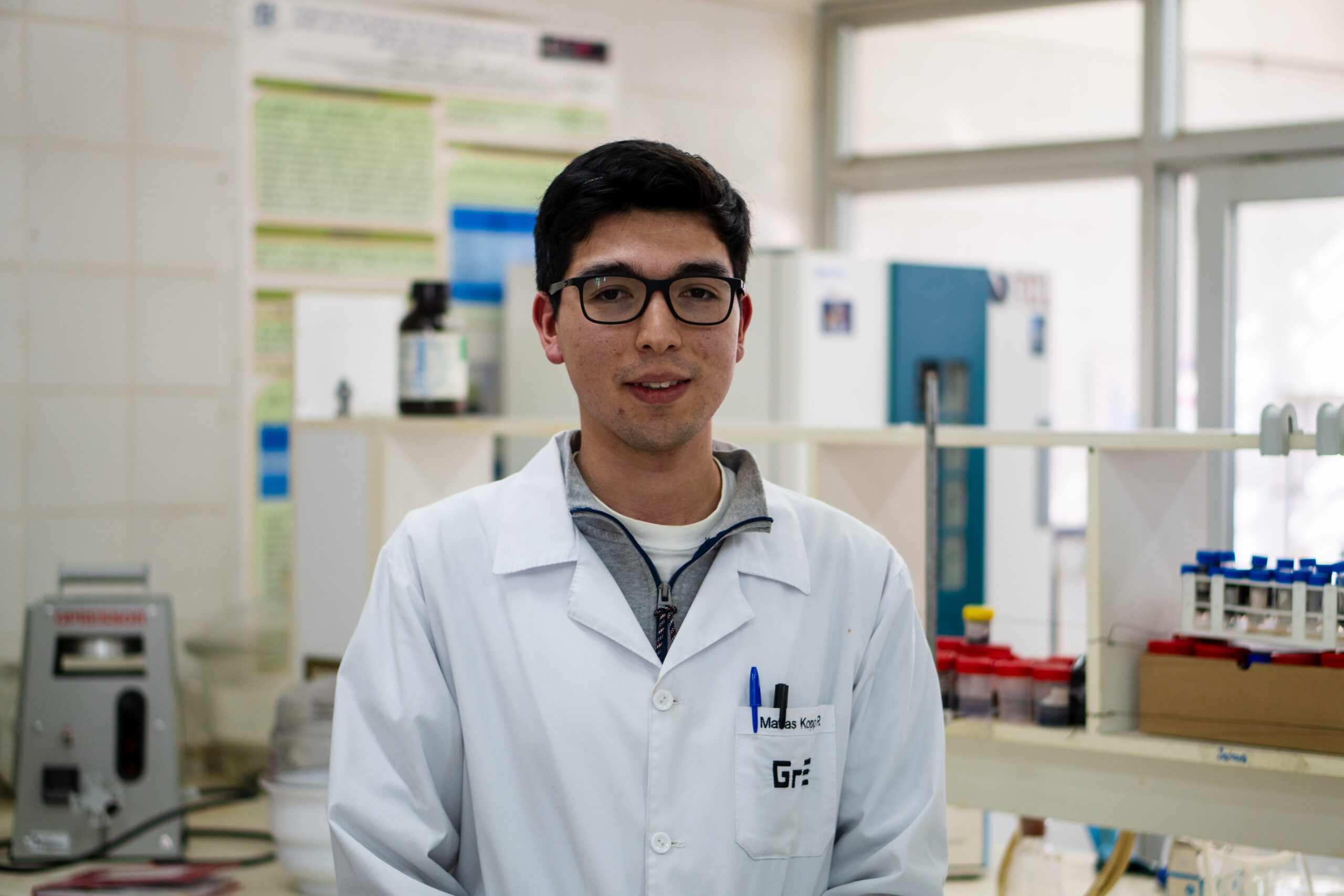
DR(C). MATÍAS ESTEBAN KOPP PAILAÑIR
Cohorte 2022
Ingeniero Civil Químico
m.kopp01@ufromail.cl
Profesor(a) Guía
Dra. Mara Cea
Profesor Co-Guía
Dr. Marcos Larriba, U. Complutense de Madrid (España)
Doctorado Nacional, ANID
Production of 2,5-furandicarboxylic acid (FDCA) from Lignocellulose-derived Glucose in a One-flow Microreactor System.
There is a growing interest in developing sustainable technological processes based on biomass utilization to produce chemicals that can replace compounds derived from fossil sources. Generating economically viable processes for synthesizing chemicals from biomass sugars is a significant challenge in this field. Among the different biomass-derived compounds, 2,5-furandicarboxylic acid (FDCA) is gaining increasing attention due to its potential application as a substitute for petroleum-derived terephthalic acid in polymer production, such as polyethylene furanoate (PEF). Various strategies have been developed to efficiently produce FDCA from its precursor, 5-hydroxymethylfurfural (HMF). However, although much research and investment have been dedicated to the synthesis of FDCA, there remains limited commercial activity in this area due to the technological challenges related to the stability and isolation of the HMF. Recently, microreactor technology has shown promise in synthesizing value-added products derived from biomass thanks to enhanced mass/heat transfer and reduced reaction times. In this regard, using microreactors in series, known as one-flow systems, is proposed as an intensification process to produce FDCA from lignocellulosic-derived sugars. The general objective of this project is to develop a catalytic process for synthesizing FDCA from lignocellulosic biomass-derived glucose using a one-flow microreactor system. To achieve this objective, the project will be conducted in several steps. Firstly, a PFA capillary segmented flow microreactor will be configured, and the synthesis of HMF from glucose will be performed. Various parameters, including temperature (140-180 °C), organic/aqueous flow ratios (1-4), and solvent types (GVL, MIBK, and DMSO), will be evaluated to maximize the yield of HMF. Additionally, mass transfer studies and hydrodynamic analysis using COMSOL Multiphysics® will be conducted to examine the impact of reactor geometry on HMF yield. In the second part of the project, a stainless-steel micropacked-bed reactor filled with 5% Pt/C particles will be configured. The synthesis of FDCA will be optimized using a Box-Behnken response surface design that considers three factors: temperature (80-160 °C), pressure (1-10 bar), and gas/liquid flow ratios (1-5), to determine their influence on FDCA yield. Similarly, to further understand the process, gas-liquid-solid mass transfer resistance studies, and hydrodynamic analysis using COMSOL Multiphysics® will be performed. Finally, based on the optimal reaction conditions for HMF and FDCA synthesis, a one-flow process will be implemented to directly synthesize FDCA from sugars obtained from brewery residual biomass. Simulations using Aspen Plus V9® will be conducted to estimate the production costs associated with the FDCA synthesis. By investigating the use of a one-flow microreactor system, optimizing reaction conditions, and utilizing lignocellulosic biomass-derived glucose as a sustainable feedstock, this project aims to advance the development of an efficient and economically viable process to produce FDCA with high yields (>90%), contributing to the sustainability of the chemical industry.
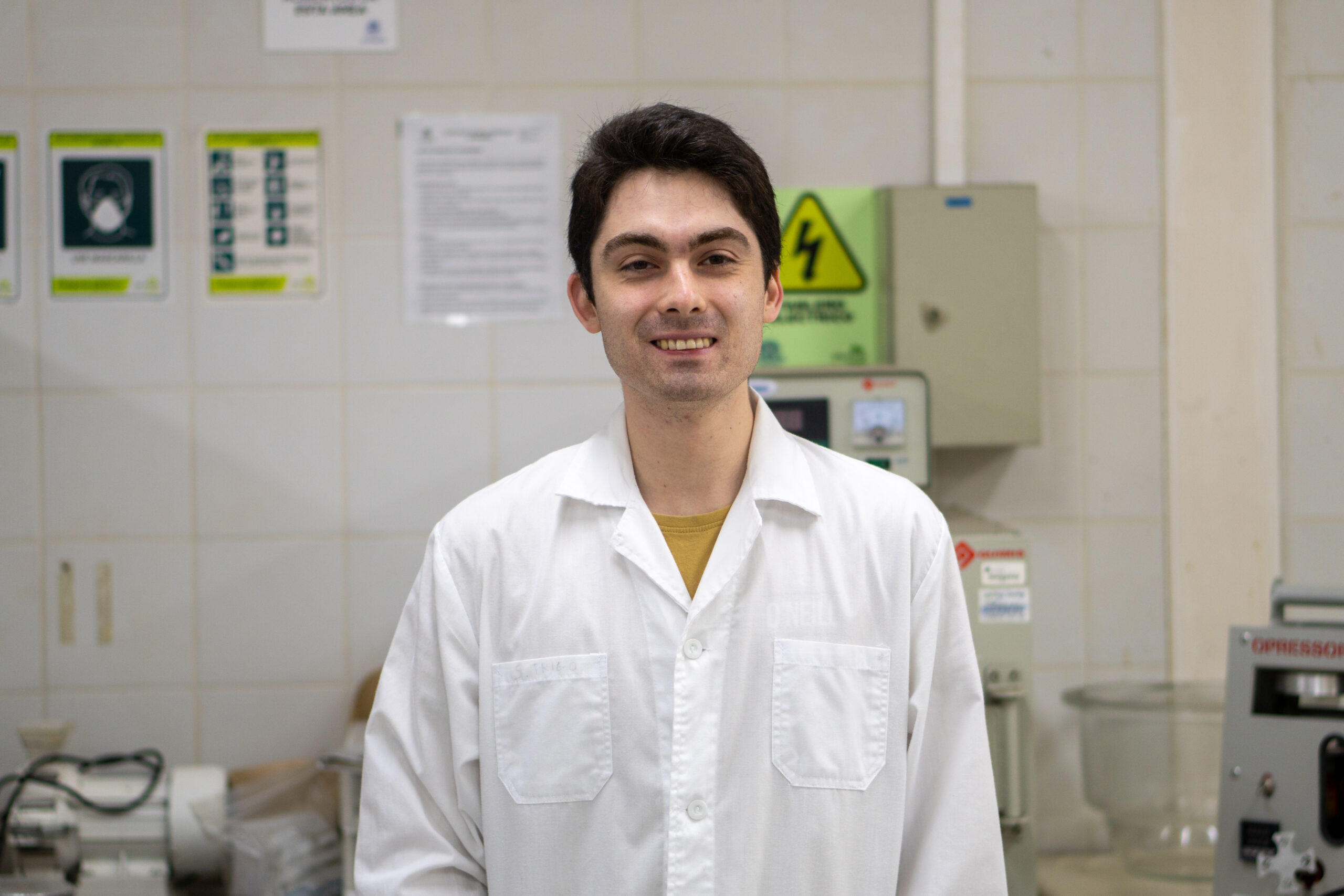
DR(C). SEBASTIÁN IGNACIO TRIGO ORTIZ
Cohorte 2022
Ingeniero Civil Químico
s.trigo01@ufromail.cl
Profesor(a) Guía
Dra. María Eugenia González
Profesor Co-Guía
Dr. Juan M. Romero, Universidad de Jaén (España)
Doctorado Nacional, ANID
Hydrogen production from formic acid obtained by microwave-assisted hydrolysis-oxidation hydrothermal treatment of brewer’s spent grain
The population, economic and industrial growth of countries has generated an increase in energy demand. This leads to an environmental and energy problem since 82% of the world’s primary energy demand is supplied by fossil fuels, which are characterized by their exhaustible nature and their greenhouse gas emissions (GHGs). In this context, the search for new energy sources has been promoted, among which hydrogen (H2) an energy vector, due to its high energy content (142MJ/kg) and its combustion generates only water vapor. However, this compound is not found in free form in the earth, but is mainly bound to other elements (carbon and oxygen), so its production requires a transformation process. At present, H2 is mainly produced worldwide through the steam methane reforming (SMR) process, although the raw material used is of fossil origin. Storage and transportation play an important role in H2 economics, being even comparable to that of production. Conventional storage methods are mainly compression and liquefaction, which increase H2 density. However, these processes are energy-intensive, require special containers and inevitably lead to H2 losses during storage. In response to this, organic liquid hydrogen carriers (LOHC) have emerged, which are organic liquids capable of receiving and releasing hydrogen through the catalytic reactions of hydrogenation and dehydrogenation, respectively. The most studied LOHC systems have high storage capacities, but they are toxic, require harsh thermodynamic conditions and are of fossil origin. In recent years, formic acid (FA) has been found to have interesting physical properties that make it a promising LOHC. However, it is worth noting that the majority of this compound is currently derived from fossil raw materials. Nonetheless, research has shown that FA can be obtained from biomass through acid hydrolysis and/or oxidation processes. This presents a promising avenue for the production of FA using renewable biomass feedstocks instead of relying solely on fossil resources. This work aims to evaluate the dehydrogenation of formic acid obtained from a hydrothermal treatment of microwave-assisted hydrolysis-oxidation of brewer’s spent grain (BSG) for hydrogen production, in order to evaluate whether the presence of by-products in the obtained FA solution influences the production of H2, particularly in the dehydrogenation of FA. For this purpose, the BSG will be characterized by determining its moisture, volatile content, fixed carbon and ash through a proximate analysis. The total carbon, hydrogen, nitrogen and sulfur content will be determined by elemental analysis, while the content of polysaccharides and monosaccharides will be determined using procedures established by the National Renewable Energy Laboratory (NREL).

DR(C). PEDRO IGNACIO CACHAÑA SEGUEL
Cohorte 2022
Ingeniero Civil Electrónico
p.cachana02@ufromail.cl
Profesor(a) Guía
Dra. Carlos Muñóz
Profesor(a) Co-Guía
Dr. Christian Antileo
Doctorado Nacional, ANID
Efficient and sustainable long-term partial nitrification in a laboratory-scale continuous activated sludge reactor using advanced control and optimization strategies.
In many industries, a large amount of pollutants is generated and deposited in wastewater, and one of the most complex ones is nitrogen, which has a significant impact on aquatic ecosystems and human health. It is necessary to reduce nitrogen levels, and for this purpose, legal regulations are established in each country. In Chile, Supreme Decree 90 sets the maximum allowable limit for total nitrogen in wastewater at 50 mg/L. In the field of wastewater treatment, various methods have been tested to remove nitrogen, and the most suitable option in terms of cost and waste reuse is biological nitrogen removal, which consists of two stages. The first stage is nitrification, which involves the transformation of ammonium (NH+4) to nitrite (NO−2) in the presence of oxygen. This process is carried out by Nitrosomonas bacteria, also named ammonia-oxidizing bacteria (AOB). Simultaneously in this stage, nitrite is further converted to nitrate (NO−3) by the action of Nitrobacter bacteria, also called nitrite-oxidizing bacteria (NOB). The second stage is denitrification, which occurs in the absence of oxygen and involves the transformation of nitrate to nitrite, then to nitrous oxide (NO), nitric oxide (N2O), and finally to gaseous nitrogen (N2). However, this process requires reconverting the nitrate to nitrite, which uses organic matter and involves high costs due to energy consumption, resulting in an inefficient process. Therefore, the technique of partial nitrification has been proposed to leverage the traditional biological nitrogen removal process. This technique aims to favor the conversion of ammonia to nitrite while avoiding the conversion of nitrite to nitrate, which saves energy in aeration and reduces the demand for organic matter. However, maintaining optimal conditions for the growth of AOB and the inhibition of NOB poses complex challenges that require advanced control techniques.
The aim of this work is to develop advanced control-based optimization strategies to achieve efficient and sustainable partial nitrification for over two months in a laboratory-scale continuous activated sludge reactor. For this purpose, a pilot plant for biological nitrogen removal equipped with a CSTR reactor will be used, featuring sensors for pH, dissolved oxygen, and hydraulic retention time (HRT), each with their respective control valves, such as an oxygen pump, a carbonate pump, and a flow regulator. The methodology for this study includes several stages. Firstly, regulatory control will be developed through robust controllers for pH, dissolved oxygen, and HRT, aiming to follow a wide range of reference values. These controllers will be designed and tested experimentally to review the limitations and speeds of each. Since we will be working with a continuous reactor, it’s necessary to determine an operating point that favors partial nitrification. For this, optimization techniques will be applied to the ASM1 model. Subsequently, three operating points will be examined to verify their feasibility in the laboratory, and the best candidate will be determined based on efficiency, implementation costs, and operating point sensitivity.

DRA(C). KAREN ALEJANDRA PEÑAILILLO MORAGA
Cohorte 2022
Ingeniero Civil en Biotecnología
k.penailillo01@ufromail.cl
Profesor(a) Guía
Dra. Cristina Diez
Profesor(a) Co-Guía
Dr. Edgar Uquiche
Doctorado Nacional, ANID
Evaluation of the production and extraction of microbial biosurfactants by solid fermentation from waste material from olive oil extraction industry
Biosurfactants are secondary metabolites with amphiphilic properties, meaning they have both hydrophobic and hydrophilic regions in their structure. These molecules have significant surface and interfacial activity, as they can reduce the surface tension of water and other fluids, and some also exhibit emulsifying properties. Biosurfactants are characterized by low toxicity, high biodegradability, and stability under various conditions, making them suitable for a wide range of applications in agriculture, pharmaceuticals, and cosmetics. Research has focused on the development and optimization of bioprocesses, including the evaluation of new biosurfactant-producing strains, partial or total substitution of substrates, and the assessment of extraction techniques. Several microorganisms have been studied for biosurfactant production. At the Center of Excellence in Biotechnological Research Applied to the Environment (CIBAMA) laboratories, three microbial strains capable of producing biosurfactants have been isolated from a biopurification system and identified as: Pseudomonas marginalis C9, Bacillus amyloliquefaciens C11, and Streptomyces lavendulae C27. These strains have been studied using olive oil as a substrate. However, there is potential to replace olive oil with alperujo a waste material from olive oil extraction industry, which contains unextracted oil, high moisture content, and a significant organic load, among other characteristics. Biosurfactants are produced by submerged fermentation from complex media. However, it has disadvantages related to foam production and increased viscosity. Another option is solid-state fermentation, as it offers several advantages for biosurfactant production such as lower water consumption, lower risk of contamination, and improved metabolite production. Another critical stage that can influence the final biosurfactant yield is the extraction process. Chemicals are used to extract biosurfactants. One alternative method is the use of supercritical fluid extraction, which enables efficient and selective collection of the bioproduct by controlling temperature and pressure. One commonly used fluid in this process is CO2, as it is effective for extracting nonpolar substances. The use and proportion of CO2 in the extraction process should be investigated to optimize extraction conditions. Ethanol is a popular cosolvent in supercritical CO2 extraction. This study aims to evaluate the production of biosurfactants in cultures of Pseudomonas marginalis C9, Bacillus amyloliquefaciens C11 and Streptomyces lavendulae C27 using alperujo as a substrate in a solid medium. The strain with the highest biosurfactant production will be selected for a process optimization, and the extraction of biosurfactants will be evaluated using supercritical CO2. First, a characterization of the alperujo will be carried out to be used in the next activities. Biosurfactant production will be carried out by submerged fermentation in a culture medium with alperujo. Biosurfactant production will be evaluated by measuring surface tension and oil displacement test, and microbial growth with these results a microbial strain will be selected.
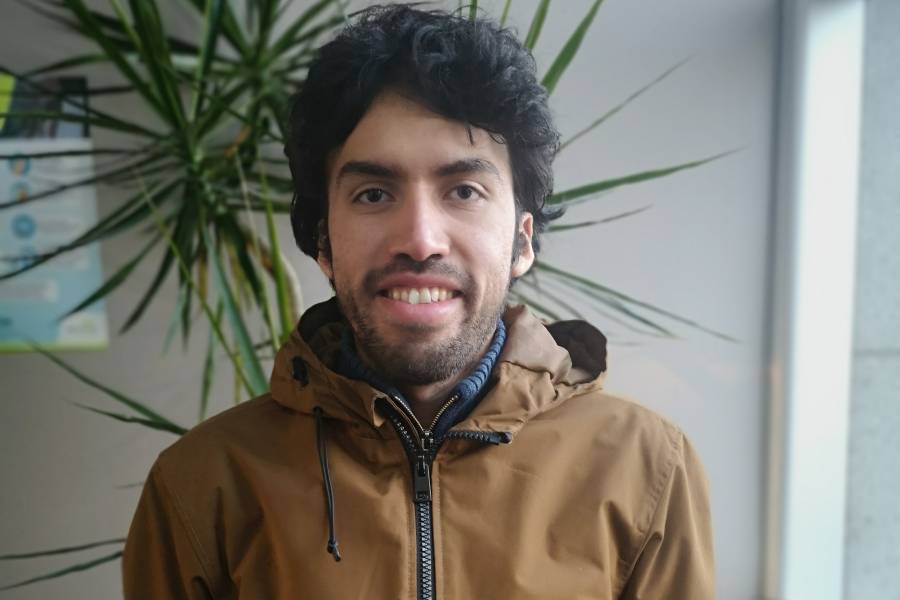
DR(C). JORGE NICOLÁS BOCAZ BELTRÁN
Cohorte 2022
Ingeniero Civil Ambiental
j.bocaz01@ufromail.cl
Profesor(a) Guía
Dra. María Eugenia González
Profesor Co-Guía
Dr. Eulogio Castro, Universidad de Jaén (España)
Doctorado Nacional, ANID
Development of activated biochar from agroindustry waste as a Cu/Ni support for the production of hydrogen from formic acid through dehydrogenation Resumen de Tesis
Hydrogen (H2) is a green fuel with the potential to replace fossil fuels. Due to the high energy requirements for its storage, hydrogen storage liquids (HSLs) are used as a safe and scalable option. Formic acid (FA) is one of the most promising hydrogen storage liquids (HSLs) for use in fuel cells, given its high volumetric capacity, stability, and ease of transport and storage. The dehydrogenation of formic acid (FAD) is the necessary reaction to obtain H2 from FA, and it is accelerated with the action of an appropriate catalyst. Pd, Pt, Au, and Ru are among the frequently used metals. However, Cu has been suggested as a viable alternative due to its selective nature. It tends to promote the dehydrogenation pathway rather than dehydration, making it favorable for certain reactions. Additionally, Cu is advantageous due to its relatively low cost compared to other metals. On the other hand, Ni has been frequently utilized as a metal that participates in the electron flow between metals, thereby enhancing the catalytic activity of FA dehydrogenation (FAD). To increase the number of adsorption sites, catalysts are often supported on porous materials, such as carbonaceous materials. Among these, biochar represents a viable option as it is synthesized from renewable and low-cost sources, and its structure can be improved through activation and doping methods, which increase the surface area and availability of active sites for catalysis, respectively. Therefore, the objective of this study is to obtain a selective catalyst for hydrogen production through formic acid (FA) dehydrogenation, based on Cu/Ni supported on activated biochar derived from hazelnut shells. Firstly, the hazelnut shell (Corylus avellana) will undergo pyrolysis after prior characterization. KOH will be used as an activator and urea as a dopant to produce activated and functionalized biochar. An experimental design will be employed, with the factors being pyrolysis temperature, residence time, and the ratio of urea to biomass, while the responses will be biochar surface area (m2 g-1) and its final nitrogen content (%m). Subsequently, for the biochar samples that yield optimal responses, Ni(NO3)2·6H2O and Cu(NO3)2·3H2O will be incorporated via wetness impregnation using two parallel methods: (a) sodium borohydride (NaBH4) will be applied as a reducing agent, varying the molar ratio between Cu and Ni salts, (b) impregnated biochar samples will be calcined in an N2 atmosphere, employing an experimental design and varying the reduction temperature and molar ratio of metal salts. In both methods (a and b), the catalytic activity (TOF, h-1) and the final metal loading in the catalyst (%m) will be determined.

Ing-Mag. JUAN DOMINGO CUMILAF LEPIAN
Cohorte 2022
Ingeniero Civil Industrial mención Bioprocesos
j.cumilaf01@ufromail.cl
Dra. Mónica Rubilar
Doctorado Nacional, ANID
Evaluation of the structure and in vitro digestibility of alginate/hemp protein as a vegetable oil encapsulation material by ionic gelation.
According to the results reported by the National Health Survey, in Chile more than 70% of the population over 15 years of age is overweight or obese. This is mainly due to inadequate eating behaviours in the population that imply a health risk because they promote an increase in the rates of chronic non-communicable diseases, which suggests looking for strategies for a healthy food intake. Many health foods possess bioactive compounds that are known to confer health benefits because they are able to modulate metabolic processes, however, their instability to processing, storage and variations in pH, temperature, light, oxygen and ions limits their use. Therefore, conferring protection to these compounds allows safeguarding their bioactive properties, improving their shelf life and giving a higher added value for their commercialization. Polyunsaturated fatty acids have been the subject of interest due to their ability to improve human health because they would have an anti-inflammatory, anticancer and antihypertensive effect. For the encapsulation of bioactive compounds, alginate has been widely studied, which allows it to have a basis in the development of capsules, however, recently the use of alginate with the addition of proteins as a structuring of the wall of encapsulation systems becomes interesting due to that better results can be achieved in encapsulation efficiency and stability during gelation, storage and digestibility processes. Among the promising proteins, hemp protein has attracted attention for its properties for the design of encapsulation structures due to a capacity for oil absorption and stabilization of emulsions better than other vegetable proteins such as soybean and pea, and may even improve the encapsulation capacity of oils and fat-soluble compounds in systems with alginate. However, not only these properties are interesting to be analyzed, from a nutritional point of view, in in vitro digestion tests, which presented a digestibility comparable to that of soy protein in the gastric phase and significantly higher in the intestinal phase in the intestinal compared to soy protein. The processing of raw materials and encapsulates, as well as foods, vary their digestibility under variations in their processing (temperature, pressure, composition and concentrations, others). Therefore, the in vitro evaluation of the performance of foods and functional ingredients of the gastrointestinal system allows obtaining results that relate not only the response to variations during processing but also the interaction between the components that constitute them. However, from the data obtained through the database, no literature has been found that describes the behaviour of alginate/hemp protein structures as wall material for the encapsulation of vegetable oil. Therefore, this study to evaluate the structure and in vitro digestibility of hemp protein stabilized O/W emulsion mixtures with sodium alginate to encapsulate vegetable oils using the ionic gelation method. This study will focus on the development of stable structures with high oil encapsulation capacity, optimized in their processing for the release and modulation of vegetable oil using static and semi dynamic in vitro digestion models.

LILIAN FUENTES PARRA
Cohorte 2023
Ingeniero Civil Ambiental, UFRO
lilian.fuentes@ufrontera.cl
Dr. Gustavo Ciudad
Doctorado Nacional, ANID
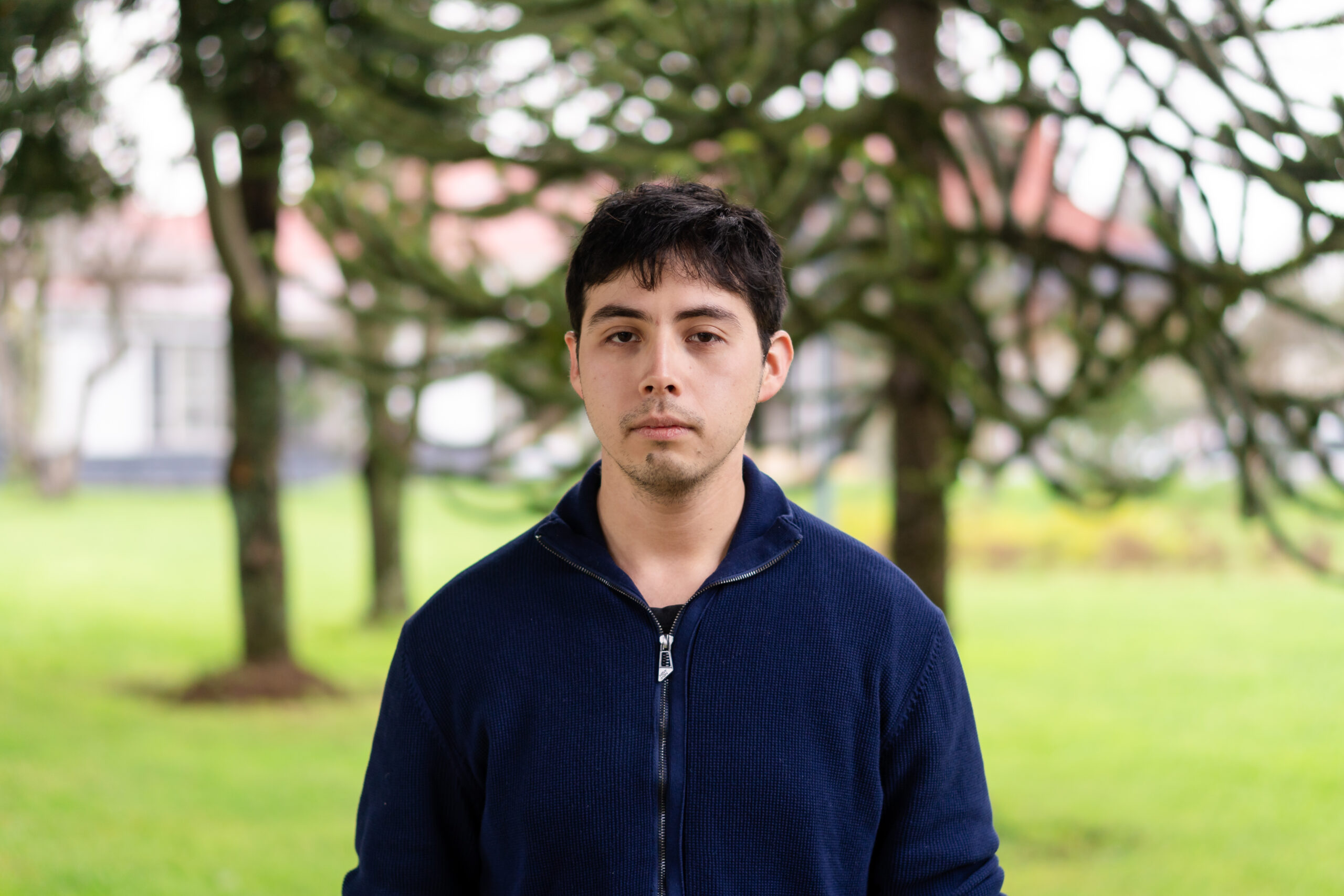
ROBERTO MARCELO MORA SANDOVAL
Cohorte 2023
Ingeniero Civil Ambiental, UCT
r.mora06@ufromail.cl
Dr. Gustavo Ciudad
Beca Postgrado UFRO
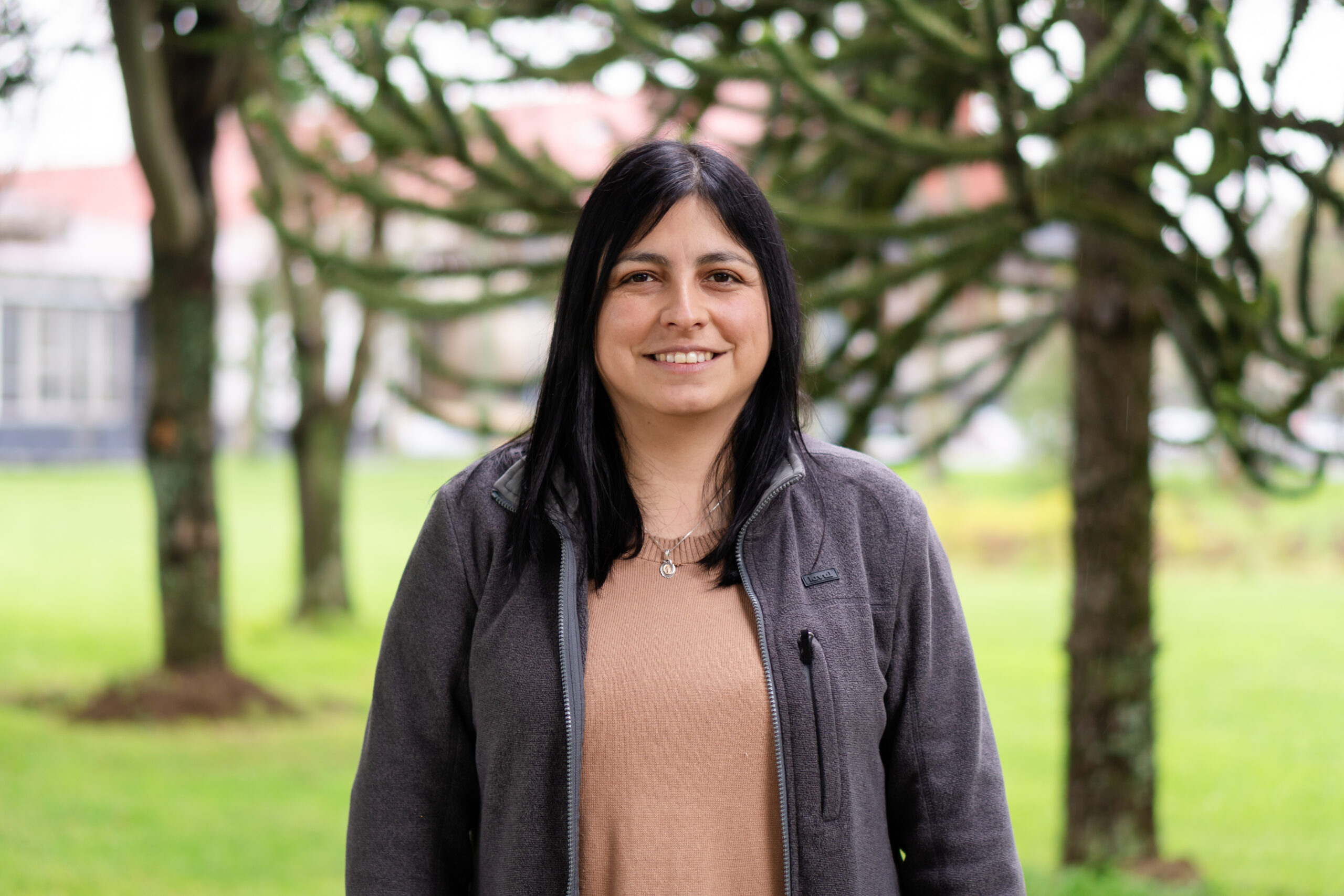
CLAUDIA NICOLE GUZMÁN DÍAZ
Cohorte 2023
Ingeniero Civil Ambiental, UCT
c.guzman09@ufromail.cl
Dr. Gustavo Ciudad
Doctorado Nacional, ANID
Universidad de La Frontera
Avenida Francisco Salazar 01145Temuco - Chile
Casilla 54-D
Fono: (56) 45 232 5000 - FAX: (56) 45 2592822